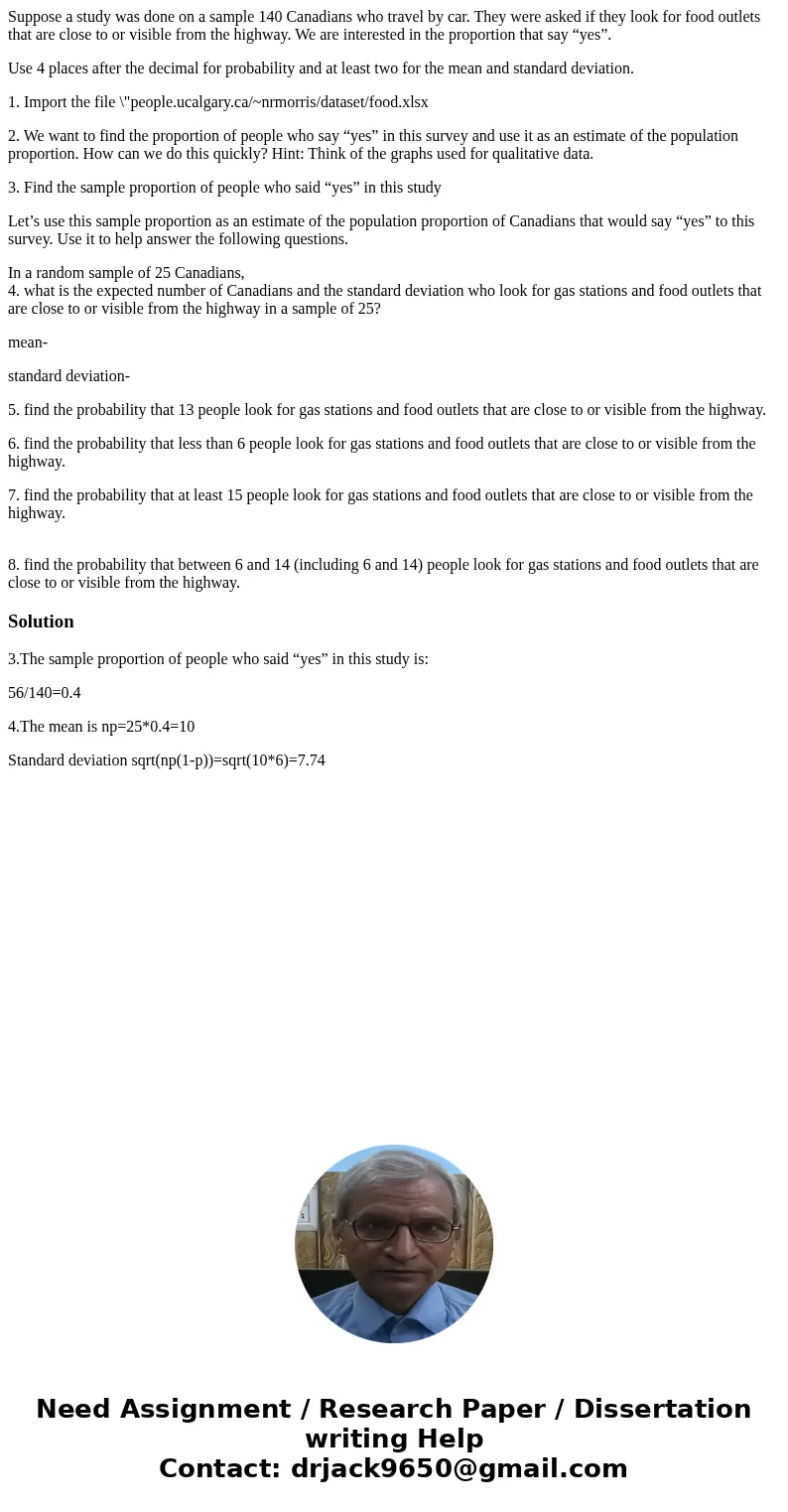Suppose a study was done on a sample 140 Canadians who trave
Suppose a study was done on a sample 140 Canadians who travel by car. They were asked if they look for food outlets that are close to or visible from the highway. We are interested in the proportion that say “yes”.
Use 4 places after the decimal for probability and at least two for the mean and standard deviation.
1. Import the file \"people.ucalgary.ca/~nrmorris/dataset/food.xlsx
2. We want to find the proportion of people who say “yes” in this survey and use it as an estimate of the population proportion. How can we do this quickly? Hint: Think of the graphs used for qualitative data.
3. Find the sample proportion of people who said “yes” in this study
Let’s use this sample proportion as an estimate of the population proportion of Canadians that would say “yes” to this survey. Use it to help answer the following questions.
In a random sample of 25 Canadians,
4. what is the expected number of Canadians and the standard deviation who look for gas stations and food outlets that are close to or visible from the highway in a sample of 25?
mean-
standard deviation-
5. find the probability that 13 people look for gas stations and food outlets that are close to or visible from the highway.
6. find the probability that less than 6 people look for gas stations and food outlets that are close to or visible from the highway.
7. find the probability that at least 15 people look for gas stations and food outlets that are close to or visible from the highway.
8. find the probability that between 6 and 14 (including 6 and 14) people look for gas stations and food outlets that are close to or visible from the highway.
Solution
3.The sample proportion of people who said “yes” in this study is:
56/140=0.4
4.The mean is np=25*0.4=10
Standard deviation sqrt(np(1-p))=sqrt(10*6)=7.74

 Homework Sourse
Homework Sourse